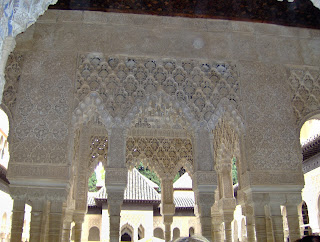Mission San Fernando Rey de Espana is a Spanish mission in Mission Hills, California. It was founded on September 8, 1797 by Father Fermin Lasuen. He was a native of Vitoria, Spain and served as Presidente of the California Missions for eighteen years. It is the seventeenth of twenty-one missions established in California. It is named for Saint Ferdinand, King of Spain in 13th century.
The Old Mission Church is the fourth church to be built here and is an exact replica of the one built between 1804 and 1806. The walls are seven feet thick at the base and taper to five feet at the top. Pope John Paull II visited the church in September of 1987.
The elaborate altar, gold-leafed reredos and pulpit are carved from walnut and date to 1687. They were originally installed in the chapel of St. Philip Neri at Ezcaray, Spain. They were then removed and reassembled in part at San Fernando. The altar depicts its patron saint being welcomed into heaven by the Holy Trinity. Father Junipero Serra stands on his left and the figure of St. Mary Magdalene stands on his right. The only piece that did not come from the original church is the statue of St. Ferdinand, which was added to reflect the history of the California missions. The statue was carved for the mission when it was built in 1797, but had to be restored after an earthquake in 1971.
The East Garden features a flower shaped fountain that was copied from one in Cordova (Cordoba), Spain. The garden also contains an assortment of rare trees, cacti and seasonal flowers.
Moorish-style arches in the Convento. The adobe walls are four feet wide and the windows stills have their original iron grilles.


















































